Once you start writing multiple grants for your nonprofit, keeping a schedule for each grant application becomes extremely important.
In this post, I share a guide to designing a grant writing schedule that will help you keep your project moving and ensure that you get your application submitted with time to spare!
Project Prep
- After you understand the grant requirements, are sure your nonprofit is eligible, and feel that your organization is qualified, it’s time to have a grant kickoff meeting with your team.
- Read the RFP thoroughly before the meeting, highlighting and taking notes on the PDF as needed.
- Type up any questions that you have for your team and add them to your shared drive with team members tagged to questions they need to answer.
- Look at old grant applications to see what new information you will need to gather for this application.
- Type up a list of materials you will need and add that to the Google Drive.
- Share all of these questions and materials needed with your team over email/the Google Drive before the meeting. This might shorten the length of the meeting and help them be more prepared. Or they might not look at it at all and want you to walk them through it during the meeting. Just ask them to have it pulled up in the Google Drive during the meeting so you can have the option to edit simultaneously. This is also better than sending things via email because they can lose track of questions that way. This way, they always know where to look.
- During the meeting, introduce the grant opportunity, reason for applying for the grant, program/project that you’re applying for (if a specific one).
- Discuss who will do what and assign due dates for each step (see below).
- Ask team members if they have any questions or need help with anything before moving forward.
Getting it Done
- You can do all of this scheduling on a shared drive, but using project management software that corresponds to a calendar and sends you notifications is better. Our team uses the free version of Asana, which is a really robust application.
- You should have several due dates the time you start working on a draft: The first draft date, the revised draft date, and the grant due (to the grantmaker) date.
- Get the drafting done as early as possible in order to see if there are any other gaps that need filled–questions you didn’t know to ask before starting, documents you need, registration numbers you need access to.
- Once you complete the first draft, share it under that grant’s project folder in the “In-Progress Work” folder on your Google Drive.
- Make a task for the responsible party or parties to review the draft in your project management software or send them an email.
- Once revisions are made, share the draft again with the relevant parties.
- Once the team responds with any other changes, make final revisions.
- Submit all the grant materials. Before you do, check, double-check, and triple-check that all materials are correct.
- After you hit submit, check the full task off on your project management software.
- After you hit submit, also send the team an email letting them know it has been submitted. If you are able to download what you submitted, do that and share it with them via email. Also upload that to the Drive. If you’re not able to download what you submitted, let them know that all of the materials you submitted for the grant are in their shared Google Drive.
- This process will likely have other components when the grant applications are more complex.
Example Timeline
Below is an example grant writing timeline from a real project with a real client. Although this is with a client, if you’re writing for your own nonprofit, you would do the same, just with your own team. Before starting on the grant, we sent this to our client and confirmed that this timeline worked for them, so do the same with your team and keep this either on a shared drive or use it in your project management software.
- June 3: Krista sends list of items needed and schedule to nonprofit
- June 5: Nonprofit returns staff and contractor info needed to Krista
- June 6: Amy compiles and formats info on staff and contractors, and org info on past projects
- June 10: Nonprofit completes financial proposal draft and sends to Krista
- June 10: Krista completes technical proposal and sends to Nonprofit
- June 11: Amy completes Letter of Motivation and sends to Krista for review
- June 11: Krista revises financial proposal and sends it and Letter of Motivation to Nonprofit for review
- June 12: Nonprofit provides Krista with feedback on all components
- June 13: Krista and Amy complete final revisions to application and sends to Nonprofit
- June 14: Krista emails application to Grantmaker
Thanks for reading and I hope this helps you keep up with your grant application schedules!
To learn more about grant writing, take our comprehensive online grant writing course, Grant Writing Made Easy.
Here’s the link to learn more and join.







Sandra Howard
July 23, 2020 11:27 pmGreat information